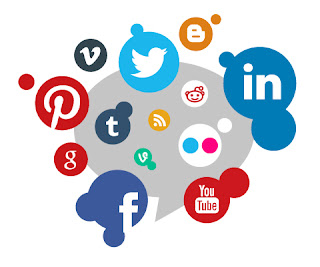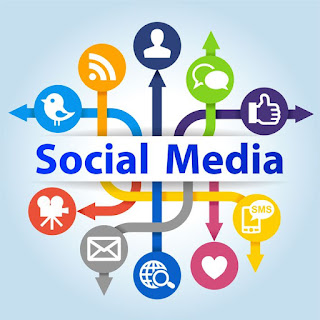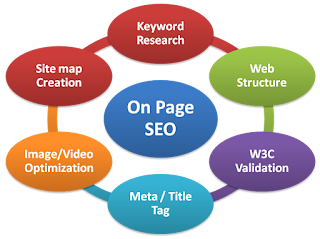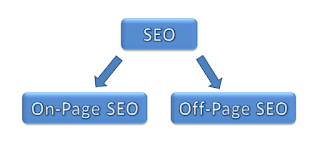How to do Social Media Marketing?
Tips For Better Facebook Page Engagement
1: Pose a Question
One of the simplest and most effective ways to kickstart a dialogue with your Facebook fans is to ask them a question. Basically, you’re inviting a response. If fans can relate to the question and you find a way to leverage people’s interests or needs, they’ll find it hard not to answer..
2: Ask Fans to Make a Choice
A fun way to get your fans to engage with you is to publish a “this or that” post. Ask people to choose a side, pick a favorite, or make a choice between two things. An added benefit is that it can create a division among your fans, which can spark a dialogue in the comments
3: Post When Your Fans Are Online
People use Facebook at different times of the day. Some are on Facebook throughout the day, while others may only check it in the early morning or evening. If you’re randomly publishing a few posts each day, there’s a good chance some of your audience will miss them. By the time they check their feed, your content could be buried.
People use Facebook at different times of the day. Some are on Facebook throughout the day, while others may only check it in the early morning or evening. If you’re randomly publishing a few posts each day, there’s a good chance some of your audience will miss them. By the time they check their feed, your content could be buried.
A picture can say a lot more than a text post. A visually striking image can bring the rapid thumb-scroller to a halt. Images have proven time and again to improve engagement, especially when they tell a story or connect with the audience on a personal or emotional level.
5: Engage With Other Brands
There’s no rule that says you need to limit your Facebook efforts to your own page. Wander the social landscape, post to other pages, and engage with brands when there’s synergy and a shared audience
6: Crowdsource Feedback
People love giving feedback. When you ask for input the right way, your audience will jump on board and be quick to respond. The added benefit is you can uncover opportunities to improve your business and delight your customers.
The standing rule for any kind of marketing is that if you want your audience to do something, you have to tell them to do it. Use a call to action in every post, whether it’s to prompt a comment, share, opt in, like, RSVP, or any other action.
8: Boost Your Best Posts
If you have a blog post or other website content that has seen tremendous traffic, post it to your Facebook page and boost that post. You don’t need to throw hundreds of dollars at it; give it a modest boost of $25 and target the people who like your page and their friends.
To find your most popular content, check your Google Analytics. In the dashboard menu, click Behavior > Site Content > All Pages. Review the metrics for each post to determine what content to promote on Facebook. If you don’t have any archived content to pull from, that’s okay. You can always boost other post types from this list with a small budget to give them an extra nudge.
9: Share Industry News and Hot Topics
Even your most loyal fans are interested in more than just your business. Sharing big news from your industry will show your fans that you’re not focused solely on promoting your business; you want to keep them informed about current topics. They’ll appreciate and respond to that.
10: Adjust Your Post Frequency
If your Facebook engagement is slipping, it might have something to do with your post frequency. Posting too little (say a few times a week) won’t help you establish relevance with Facebook’s algorithm and you’ll be fighting for space in your audience’s feed.
11: Give People a Giggle
We all love a good laugh in our news feed. Lighten the mood for your fans and show them that you have some personality. Don’t overthink it; just do something to give your fans a chuckle. Keep their interests in mind and make sure the humor is relevant to your audience
12: Respond to Everyone
If you receive comments from your fans but fail to respond or acknowledge them, they’ll notice and stop engaging with you. It only takes a few minutes throughout the day to monitor your social activity and make a few quick or witty responses to fans who comment.
13: Solicit Fan Content
Encourage your fans to share photos on a given topic or photos of your products. This is a fun way to spark engagement and dialogue with fans. To go one step further, run a contest or offer a giveaway to encourage more shares and submissions.
14: Share Content From Other Channels
Unless you’re publishing the same posts to all of your social channels, you probably have a goldmine of content that users on other channels have never seen. Don’t let that content gather dust. Look over your content, videos, and images on other platforms (YouTube, Twitter, Instagram, Pinterest, and so on) and share the best with your Facebook fans.
This is a great way to fill a few gaps in your weekly posting schedule if you come up short on content ideas.
15: Go Behind the Scenes With Live Video
Visual content is much more likely to be shared on Facebook, and this is especially true for video. Facebook Live makes it easy to stream live video to your audience, anytime you like, to leverage that engagement.
16: Make an Emotional Connection
If you want to elicit a big response from your fans, publish a post that appeals to your audience on an emotional level. Share content and tell stories that pull at people’s interests, emotions, fears, and even their dislikes. Brand loyalty doesn’t come from a product; it comes from a customer’s joy at experiencing a shared sentiment or finding a solution that works
17: Provide Value
Anytime you share or post content to your Facebook page, ask yourself what kind of value you’re providing to your fans. The best way to get their attention is to make sure there’s a takeaway or something in it for them. At the very least, give them a good chuckle. At best, teach people how to do something, inspire them to take action, and add value to their life.
18: Tap Into Trending Topics
There’s a whole world of content revolving around us every second. Keep your ear to the ground for events and trends that might grab the attention of your audience. Work a relevant trending hashtag into a post to help boost organic visibility in social search.
19: Recycle High-value Posts
You’re not limited to posting only new content to your Facebook page. Occasionally dip into your archives for an engagement spike.
20: Upload Native Video
YouTube is a sizable social channel, but if you’ve been sharing your YouTube videos to your Facebook page, it’s time to make a switch. Facebook’s native video allows you to upload videos directly to your page, just like photos, and the algorithm works in your favor if you do.
21: Celebrate Holidays
If you factor in silly holidays, along with more serious awareness dates and traditional holidays, you’ll never run out of ideas for your Facebook content schedule. If it’s a more whimsical celebration, have a little fun with it.
22: Share Valuable Curated Content
Your audience knows when you’re promoting your business, and if you do it too much, they’ll start losing interest. To mix it up a bit, source high-value content relevant to their interests. Be a helpful resource for your fans
23: Post a Quiz or Poll
While a survey can generate more serious engagement, a quiz or poll can be a little more lighthearted. Focus on current developments in your industry or topics that are relevant to your audience. This type of interactive content can drive substantial engagement, especially if it generates personalized results that can easily be shared.
24: Rethink Hashtag Use
BuzzSumo analyzed over 1 billion Facebook posts and discovered that posts without hashtags get more engagement than posts with hashtags.
While you should use hashtags for trending topics to boost visibility, use hashtags sparingly (or not at all) in all of your other types of posts. Don’t make the mistake of using multiple hashtags in the hopes of increasing your content’s visibility.
25: Use Audience Targeting for Organic Posts
You can target a custom audience for your Facebook posts just like you target a specific audience with your ads.
Like ads, segmentation can potentially limit your reach, but the upside is your content is more likely to be seen by the people you want to get it in front of. It also costs nothing to set up a custom audience for your organic posts.
26: Host Contests and Giveaways
Not many types of posts can garner as much attention as a giveaway or sweepstakes. The greater the value and relevance of the reward, the greater the engagement and potential reach. The best part about giveaways is they could potentially cost very little.
Give away your own product or even a decent third-party prize, and your costs are limited. You’re only paying out of pocket for the cost of the prize, fulfillment, and whatever service you use to host the promotion.
If your Facebook engagement is slipping, it might have something to do with your post frequency. Posting too little (say a few times a week) won’t help you establish relevance with Facebook’s algorithm and you’ll be fighting for space in your audience’s feed.
11: Give People a Giggle
We all love a good laugh in our news feed. Lighten the mood for your fans and show them that you have some personality. Don’t overthink it; just do something to give your fans a chuckle. Keep their interests in mind and make sure the humor is relevant to your audience
12: Respond to Everyone
If you receive comments from your fans but fail to respond or acknowledge them, they’ll notice and stop engaging with you. It only takes a few minutes throughout the day to monitor your social activity and make a few quick or witty responses to fans who comment.
13: Solicit Fan Content
Encourage your fans to share photos on a given topic or photos of your products. This is a fun way to spark engagement and dialogue with fans. To go one step further, run a contest or offer a giveaway to encourage more shares and submissions.
14: Share Content From Other Channels
Unless you’re publishing the same posts to all of your social channels, you probably have a goldmine of content that users on other channels have never seen. Don’t let that content gather dust. Look over your content, videos, and images on other platforms (YouTube, Twitter, Instagram, Pinterest, and so on) and share the best with your Facebook fans.
This is a great way to fill a few gaps in your weekly posting schedule if you come up short on content ideas.
15: Go Behind the Scenes With Live Video
Visual content is much more likely to be shared on Facebook, and this is especially true for video. Facebook Live makes it easy to stream live video to your audience, anytime you like, to leverage that engagement.
16: Make an Emotional Connection
If you want to elicit a big response from your fans, publish a post that appeals to your audience on an emotional level. Share content and tell stories that pull at people’s interests, emotions, fears, and even their dislikes. Brand loyalty doesn’t come from a product; it comes from a customer’s joy at experiencing a shared sentiment or finding a solution that works
17: Provide Value
Anytime you share or post content to your Facebook page, ask yourself what kind of value you’re providing to your fans. The best way to get their attention is to make sure there’s a takeaway or something in it for them. At the very least, give them a good chuckle. At best, teach people how to do something, inspire them to take action, and add value to their life.
18: Tap Into Trending Topics
There’s a whole world of content revolving around us every second. Keep your ear to the ground for events and trends that might grab the attention of your audience. Work a relevant trending hashtag into a post to help boost organic visibility in social search.
19: Recycle High-value Posts
You’re not limited to posting only new content to your Facebook page. Occasionally dip into your archives for an engagement spike.
20: Upload Native Video
YouTube is a sizable social channel, but if you’ve been sharing your YouTube videos to your Facebook page, it’s time to make a switch. Facebook’s native video allows you to upload videos directly to your page, just like photos, and the algorithm works in your favor if you do.
21: Celebrate Holidays
If you factor in silly holidays, along with more serious awareness dates and traditional holidays, you’ll never run out of ideas for your Facebook content schedule. If it’s a more whimsical celebration, have a little fun with it.
22: Share Valuable Curated Content
Your audience knows when you’re promoting your business, and if you do it too much, they’ll start losing interest. To mix it up a bit, source high-value content relevant to their interests. Be a helpful resource for your fans
23: Post a Quiz or Poll
While a survey can generate more serious engagement, a quiz or poll can be a little more lighthearted. Focus on current developments in your industry or topics that are relevant to your audience. This type of interactive content can drive substantial engagement, especially if it generates personalized results that can easily be shared.
24: Rethink Hashtag Use
BuzzSumo analyzed over 1 billion Facebook posts and discovered that posts without hashtags get more engagement than posts with hashtags.
While you should use hashtags for trending topics to boost visibility, use hashtags sparingly (or not at all) in all of your other types of posts. Don’t make the mistake of using multiple hashtags in the hopes of increasing your content’s visibility.
25: Use Audience Targeting for Organic Posts
You can target a custom audience for your Facebook posts just like you target a specific audience with your ads.
Like ads, segmentation can potentially limit your reach, but the upside is your content is more likely to be seen by the people you want to get it in front of. It also costs nothing to set up a custom audience for your organic posts.
Not many types of posts can garner as much attention as a giveaway or sweepstakes. The greater the value and relevance of the reward, the greater the engagement and potential reach. The best part about giveaways is they could potentially cost very little.
Give away your own product or even a decent third-party prize, and your costs are limited. You’re only paying out of pocket for the cost of the prize, fulfillment, and whatever service you use to host the promotion.








